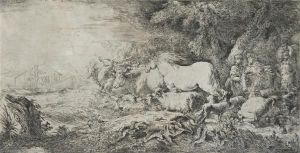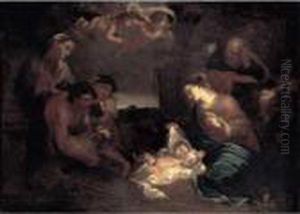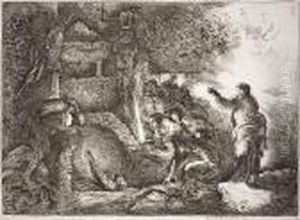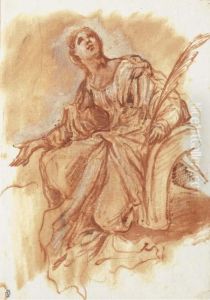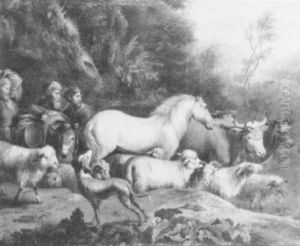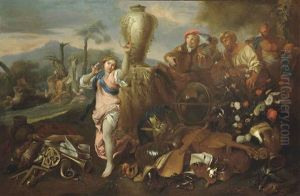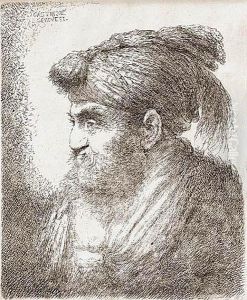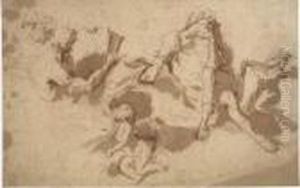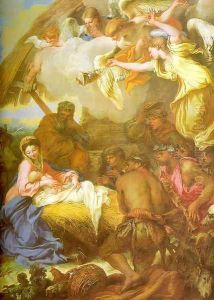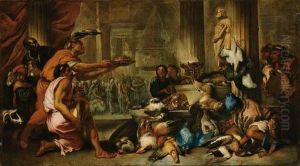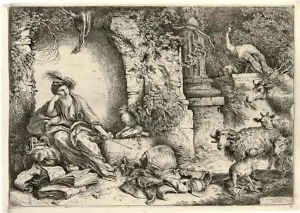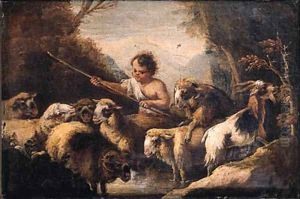Giovanni Benedetto Castiglione Paintings
Giovanni Benedetto Castiglione was an Italian Baroque artist, painter, printmaker, and draftsman. Born in Genoa in 1609, Castiglione is often credited with pioneering the monotype process, a type of printmaking known for its unique textural qualities. He was also known for his lush, painterly etchings that reflected the Baroque interest in dramatic light and shadow, as well as his rich, vivid oil paintings.
Castiglione received his initial artistic training in Genoa, after which he likely traveled to Rome and Naples, where he was exposed to the works of prominent artists like Ribera, Poussin, and Carracci. These experiences would have a significant impact on his artistic development. His work often depicted religious and mythological scenes, imbued with a dynamic and inventive sensibility.
He was also influenced by the works of Rembrandt, whose etchings were circulating in Italy at the time. This influence is particularly evident in Castiglione's adoption of direct and spontaneous drawing techniques, which allowed him to create a sense of immediacy and emotional depth in his work. Despite his achievements, Castiglione's life was marked by financial difficulties and disputes with patrons, which led to a somewhat itinerant career.
After returning to Genoa, he worked for local patrons and also received commissions from the Savoy court in Turin. His innovative printmaking techniques, particularly his monotypes, continued to be influential after his death in 1664. Castiglione's legacy is that of a bold and versatile artist who expanded the possibilities of printmaking and brought a painterly quality to the medium that was rare for his time.





